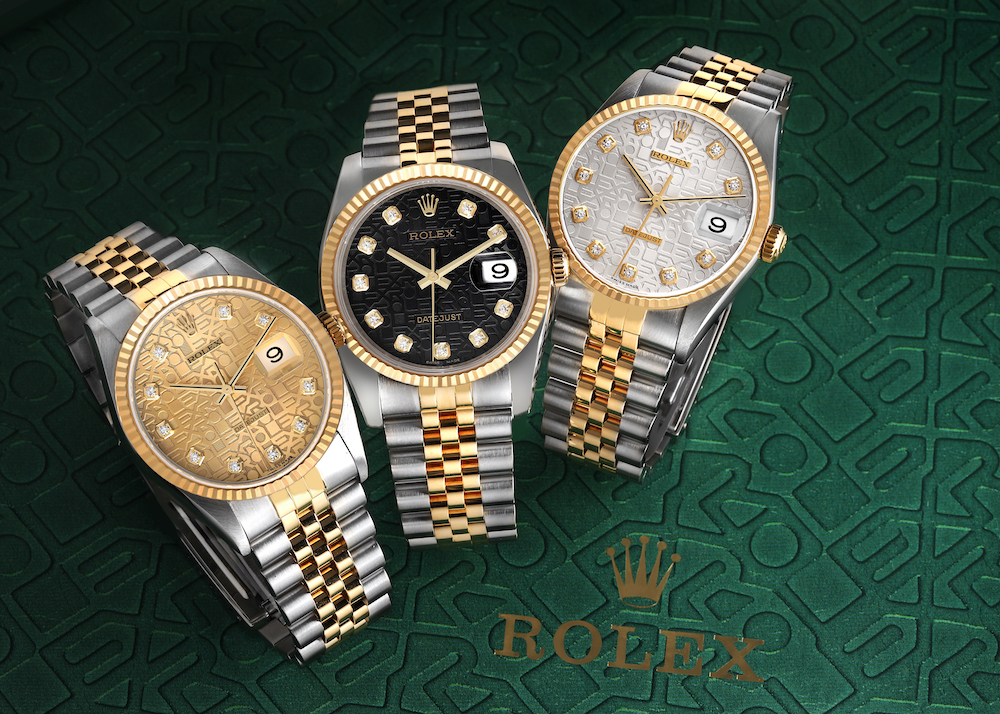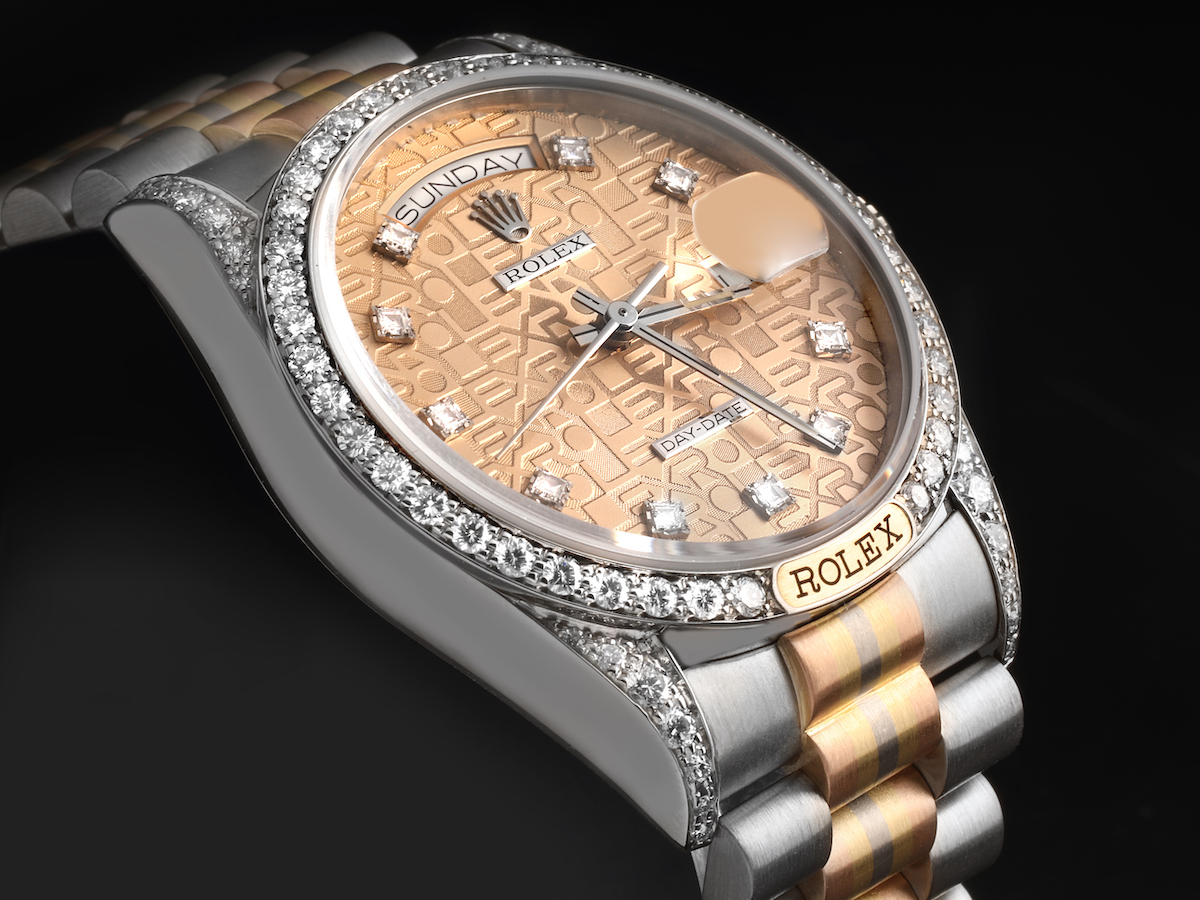Rolex is one of the world’s most iconic and popular luxury watch brands, signified by the ultra-recognizable crown logo. Renowned for its precision, craftsmanship, and style, the name Rolex has become synonymous with quality and status, but its origins and evolution over time are less well-known.
Here, we will explore the fascinating history of the Rolex name and logo, tracing their development from the early days of the company to the present day. There are various theories, and some say legends of how the Rolex name came to be, and how the distinctive crown logo has evolved through time.
Through this exploration, we will gain a greater understanding of the rich heritage and enduring appeal of the famous Rolex brand.
<>
How did Rolex get its name?
A little history of the Rolex company
Rolex was founded in 1905 by Hans Wilsdorf and Alfred Davis in London, England. Interestingly, Wilsdorf wasn’t a watchmaker. He and Davis imported Hermann Aegler’s Swiss movements and placed them into watch cases crafted by other watchmakers. They didn’t make any watches themselves in the beginning either. They actually assembled watches for other jewelers.

Three years later, they opened an office in La Chaux-de-Fonds, Switzerland and renamed the company, Rolex. It wasn’t until after World War I that Rolex moved to Switzerland, not only to avoid post-war taxes in Britain, but to bring fruition to Wilsdorf’s dreams of making more elegant and reliable watches.
The Oyster case and the self-winding movement, the foundation of Rolex’s watches, were made before the move to England. Most of Rolex most notable innovations were made after the war. <>
<>
The beginnings of the name Rolex
The company didn’t start under the name Rolex. When it was established in 1905, it followed the common trend of naming a company after the founders and went by Wilsdorf & Davis.
In 1908, the name ‘Rolex’ was trademarked for the company and there began several legends about how that name came to be.

In a speech given in 1958, Wilsdorf said that as he sat on a horse-drawn omnibus in Cheapside, London, he heard a voice whisper “Rolex” in his ear. The name immediately struck him, and he decided to use it as the name for his watch company. He had gone through hundreds of permutations of letters, and none struck him before this as Rolex did. By 1913, the name ‘Rolex’ was trademarked internationally.
It’s a great story that has been widely repeated as a colorful legend and an intricate part of Rolex’s mythology, as they keep many things to themselves, but the true origin of the name ‘Rolex’ is still widely left to speculation. What is generally believed is that Wilsdorf came up with the name himself and it could be a mix of words that he found appealing.
<>
Hypotheses Surrounding the Name ‘Rolex’
Despite the speech given by Wilsdorf himself, there have been many theories thrown out there in regard to how the name ‘Rolex’ came into existence.
One such theory is that Wilsdorf wanted a name that could be easily pronounced in any language. The name ‘Rolex’ is thought to be an onomatopoeia for the sound of a watch being wound.
Another story is that Wilsdorf cleverly mixed the words “horological excellence” with “luxury” and boiled them down to the easily pronounced ‘Rolex’.

Some believe it’s a clever combination of the French phrase ‘horlogerie exquise’ meaning exquisite watchmaking. Very similar to the previous theory, this phrase is thought to have been boiled down to the simple Rolex.
No matter how Wilsdorf came up with the five-letter moniker, Rolex is not only easy to pronounce in many of the most widely used languages, but it’s also hard to misspell as its spelling it completely phonetic. It also happens to be short, so when they started sneaking the name onto every watch they made, it fit in a neat and uncluttered way.
<>
How did Rolex get its logo?
While the name, Rolex, started its journey in 1908, the famous Rolex Coronet wasn’t registered until 1931. Until then, the first Rolex logo consisted of either the simple script of ‘Rolex’ or ‘Wilsdorf & Davis’. The Coronet that is known today wasn’t developed until the company’s name was changed to Rolex SA in 1925.

Even the earliest Rolex Oyster watches in the 1920s only carried the Rolex name on watch dials. After the coronet was registered in 1931, you’ll find the crown logo on the watch dials with the elegant ‘Rolex’ script underneath.
In the 1950s, Rolex decided to add the coronet to the winding crowns as well and instead of adding the logo to the dial of the watch, it replaced the 12 o’clock hour marker on certain models (Oyster Perpetual, Air-King, and Datejust to name a few).
<>
Theories on the Advent of the Coronet
Much like the secrecy behind the origins of the name, Rolex, there’s secrecy and therefore theories on how they came up with the coronet design for the company’s new logo. The choice to use a crown may simply be a symbol for the power and prestige owned by the company, much like that given to a crown worn by a royal family member. Others think it might be more complicated than that.

There’s considerable speculation as to what Wilsdorf was thinking when he placed the now famous coronet on his watches. Some think it has some special meaning and the five points on the crown represent the 5 fingers on the human hand. This theory came about after an ad in a 1978 Rolex magazine featured an image of an open hand against a blue sky with a gold Rolex watch on the wrist.
Others believe it’s more artistic and the five points to the crown represent five branches of a tree each topped with a pearl. While there’s speculation as to what it might be, there’s not much as to why the crown would represent those icons and for what purpose and Rolex is pretty quiet on the subject.

Others, with a little less artistic thoughts, simply think that Wilsdorf used the coronet to continue a theme. In 1926 the Tudor brand was registered as a royal theme (named for the famous royal line) when Veueve de Philippe Huther created designs for Hans Wilsdorf.
The crown symbol does make a lot of sense. Rolex prides itself on the excellence of their watches and the luxury and therefore exclusivity something that defines a royal line. From a design standpoint, it’s more likely the five points of the crown simply mirror the five letters in the brand’s name and the crown itself mirrors one of the early slogans of Rolex: “A Crown for Every Achievement”.
<>
How the Coronet has changed
Originally, the Rolex crown was seen in gold over the Clarendon-based typeface of Rolex in green below it. The only watch that still displays this combination is the Rolex Air-King. Without fail, however, the Rolex Coronet always appears in gold whether paint or applied gold pieces.

The printed logo outside of the watches always appears with the gold coronet and green lettering. Having been around for almost a century now, the logo has only endured two revisions. The green that typifies the Rolex brand stands for ambition and prosperity. It’s also thought to symbolize money which makes sense against the gold of the coronet, the combination easily symbolizing wealth and status.
In 1965, they changed the crown’s color slightly towards the bronze or very light gold and the iconic green text stood out more against the green in a blue-grey color while still maintaining the same font.
That change lasted almost 40 years. By 2002 and until now the bright gold crown returned alongside the green font. The only piece missing from the original logo of the 1920s was the thin gold outline around the Rolex name.
<>
History of the Rolex Name and Logo: Final Thoughts
The Rolex name and logo are well-known, iconic symbols of luxury, precision, and style. The company’s name has a fascinating history; while the crown logo has stood the test of time and has become one of the most recognizable symbols — not just in the world of luxury watches, but among the world’s best brands.
Through its commitment to quality and innovation, Rolex has established itself as a leader in the watchmaking industry. Its name and logo are instantly recognizable and are a true example of perfect branding.
As a leading dealer of pre-owned Rolex watches, SwissWatchExpo has a deep appreciation for the history and heritage of the Rolex Brand. Check out what we have to offer with our wide selection of pre-owned Rolex watches, and be comforted that each piece was carefully inspected to ensure the highest quality and authenticity.
<>


